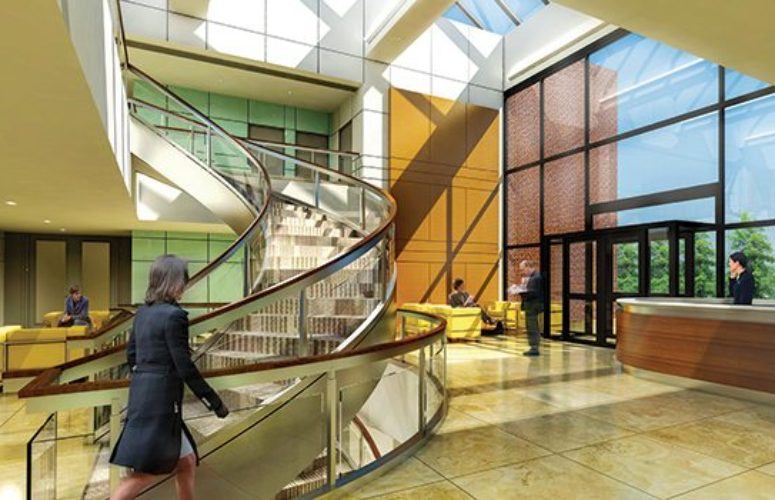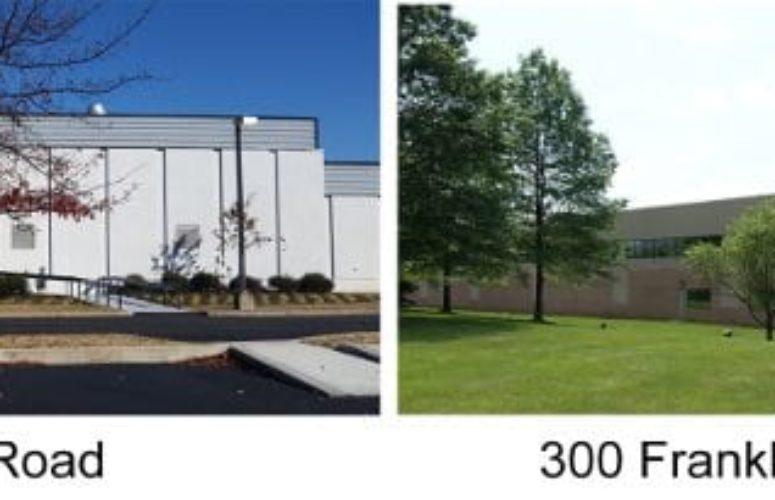
Stranded Office Buildings
There’s a desire for great suburban locations with urban vibes.
By Eric C. Peterson, Contributing Writer On Jul 11, 2016The reasons are economic and demographic. A cyclical economy is a major part of the equation, coupled with obsolescence. On the other hand, multiple generations of New Jerseyans are opting for lifestyle changes focused on urban areas. The result: Millions of square feet of vacant suburban office properties, dubbed “stranded assets.”
The impact of the economy goes without saying. A downturn like the last recession, coupled with out-of-state relocations, cost the state jobs, many of which are never regained. Additionally, office properties constructed in the 1970s and ‘80s are functionally obsolete for 21st-century office users, and may no longer be suitable for their intended use.
Regarding demographics, the Millennial generation has been drawn to urban environments, providing new locational impetus for the companies hiring them. “But it’s not just Millennials, but Baby Boomers who want to live where there’s a live/work/play environment, where they’re not so auto dependent,” says Ann Brady, executive director of Trenton-based PlanSmart NJ.
What’s the definition of a stranded asset? In the wake of headlines about companies leaving suburban sites, PlanSmart NJ launched a study to analyze the data. “The definition we came up with was, for office parks, any building 100,000 square feet or greater, with chronic vacancy of five years or more, with an average vacancy rate of 14 percent or higher, because 14 percent was the national average,” Brady says.
What’s next for these properties? Enter the concepts of repurposing and repositioning. There isn’t necessarily a simple answer because “it’s not a simple situation,” says Michael McGuinness, CEO of NAIOP New Jersey, whose organization is part of the steering committee funding PlansSmart NJ’s study. “Every town with vacant office space has a unique challenge. In some cases, it’ll be tearing it down. Others will be rezoning to accommodate other uses. Each site is different and unique.”
The process has indeed begun. For repurposing, “there are definitely conversions to other uses occurring,” says William Hanson, president of NAI James E. Hanson, Hackensack. They range from mixed-use, to residential, and retail in some instances, “although there’s not enough demand for retail,” he says. “And we’re hearing conversations about hotels.”
Re-use as office, or repositioning, isn’t out of the picture, either. “Those successful in the suburban office market are putting real money into their properties to make them more functional for what people are using the buildings for today,” Hanson says.
“Every major landlord understands they’ve got to offer a first-class amenity package to attract tenants,” says Dan Loughlin, New Jersey broker lead for JLL, Parsippany. JLL managing director Jonathan Meisel agrees, “but not every landlord has the wherewithal to put that kind of money in without a line of sight of getting results.”
“If you don’t do it, you’re stuck with a commodity product – non-descript, unexciting,” says Jeffrey Heller, principal and managing director for Avison Young, Morristown. “With lack of demand in the market now, you have to differentiate yourself, be more attractive to those deals that are out there. The majority of larger transactions are going to those office properties.”
“Building owners and property managers come to us and say, ‘Here’s our building – fix it up,’” says Paul Newman, partner and vice president of Kimmerle Newman Architects, Morristown. “They understand that even if it’s a class A building, they’ve got to keep upgrading it. Plans and renderings are great marketing tools for a broker team.”
The key? Prove that an upgrade is actually going to happen. “You have to start some piece of the work,” Newman says.
While repurposing for other uses beckons, repositioning for office use continues as a factor. According to Stephen Jenco, vice president-research for JLL, 2014 saw 1.2 million square feet repositioned as office, and while the number dropped to 700,000 square feet in 2015, 2016 is on target for two million square feet. With annual office leasing velocity in the 8 million- to 9 million-square-foot range, that amounts to 20 percent to 25 percent of normal leasing velocity.
“There’s a big distinction between buildings being repositioned, maintaining office use and the capital required to create the modern work environment vs. repurposed for whatever use,” clarifies Kevin Welsh, senior vice president of CBRE, Saddle Brook. “It’s a bifurcated discussion. Both repurposing and repositioning are happening.”
Whether repositioned or repurposed, there are challenges.
For something that will add value, like residential, “you can get push-back from the town,” Meisel says. “We’ve seen statistics cited on cost per pupil for schooling outstripping the advantages of the new tax revenue, for example.”
“There’s still a prevalent NIMBY attitude in some municipalities,” Loughlin says. “But with the tax revenue challenges a lot of them have, there now seems to be a lot more tolerance for zoning changes.”
“Zoning is tricky, and for someone to buy a property while recognizing they have to go down the road on a zoning change is tough,” Welsh says. “But where there are challenges, and changes in market demand, there’s opportunity, and it’s creative people who identify and execute.
“Towns are starting to face reality – no one wants to lose ratables,” adds Welsh, who was involved in the sale of the Sony building in Park Ridge. “People might say they don’t want residential because it’s going to have an adverse impact on the school system or on town services, but if you don’t agree to the change, you now have an office building that’s vacant and you’ve lost the ratable.”
“We need leadership at the local level,” Brady says. “Local officials need to educate themselves, and need to be transparent and work with constituents and, if they choose to repurpose a site, clearly state what it will do for the town, why the town needs it, and the economic ramifications.”
“Towns have to wake up – and many are – to the new reality that planning and zoning as it was done 50 or 100 years ago is no longer sustainable,” McGuinness says. ”In the old days, towns were very compartmentalized into industrial, commercial and residential zones, and, in many cases, that’s no longer [true] because of the way industry has morphed.”
“We’re writing a guidebook on what needs to be done,” Brady says. “What we don’t want to do is have whatever we do today be the stranded asset of the future.”
As far as examples of what’s being done, a prime one is Somerset Development’s overhaul of the Bell Labs property in Holmdel. Indeed, to underscore its commitment, Somerset relocated its headquarters from its long-time home in Lakewood to the property, now reborn as Bell Works.
Designed by famed architect Eero Saarinen and constructed in 1962-64, the property encompasses 2 million square feet on 472 acres. It served as Bell Labs’ headquarters, and later, a facility for Lucent and Alcatel-Lucent, and was acquired by Somerset in 2013.
“Not all vacant buildings have outlived their useful life,” says Somerset President Ralph Zucker. “But many have outlived their zoning.”
In Bell Works’ case, it was zoned for one tenant, one use. “So you have a 2-million-square-foot structure, and unless you were able to occupy all 2 million square feet, you couldn’t use the building,” Zucker notes.
That zoning has finally changed, paving the way for mixed-use repurposing.
The $200-million project will include office, retail, healthcare, community services including a library, and event space. Recently, WorkWave has signed a 70,000-square-foot lease at the site, with the promise of bringing in more than 100 jobs. The redevelopment also includes 225 residential homes developed by Toll Brothers.
Another example is Advance Realty’s redevelopment of 62 acres of the 110-acre former Sanofi property in Bridgewater as the New Jersey Center of Excellence, a live/work/play environment. Plans call for 400 luxury residences, retail and restaurants, a wellness center, entertainment and outdoor recreation.
“Individuals don’t want to give up amenities, conveniences and overall lifestyle that make urban living attractive,” Advance CEO Peter Cocoziello says. “In Bridgewater, we’re meeting that demand by providing city-inspired living.”
In late 2015, Nestle Health Science announced it would bring more than 250 jobs to the site, taking 180,000 square feet.
“Nestle signed the agreement on the condition that housing in the proposed plan is actually going to be there,” PlanSmart NJ’s Brady says. “That sends the message that employers do want to have housing close by for their employees.”
Architect Newman has been involved in major projects, notably the 83,500-square-foot Interpark Office Campus in Parsippany. It stood, for 10 years, “as a rusting steel structure clearly visible from Route 280,” Newman says. The result: The new owner re-skinned it and signed IMS Health for three of the four floors, moving its headquarters from Connecticut. “IMS eventually leased the entire building, and the owner then sold it to them.”
Other projects under Kimmerle Newman’s architectural aegis include 800-900 Lanidex Plaza in Parsippany; and 700 Route 202-206 in Bridgewater, which the new owner acquired from departing Valeant Pharmaceuticals. “It was built for a single user, but we did a planning exercise that showed it could work for multi-tenant use,” Newman says.
Heller points to KBS Realty’s effort at the 1.2 million-square-foot 100-600 Campus Drive in Florham Park. “KBS saw that the only way to compete with urban environments was to bring those elements to the campus,” Heller says. The result: A private shuttle for employees to the train, various food services, and a freestanding daycare center operated by Goddard School.
JLL’s Meisel points to the 500,000-square-foot former Continental Insurance, and later Aetna building in Cranbury. It had a brief life as a data center, but the owner is set to demolish and make room for two industrial buildings. There is also medical re-use, specifically Sloan-Kettering’s new use for a 300,000-square-foot building on Red Hill Road in Middletown, once occupied by AT&T, he notes.
“This market has 40 million square feet of vacant space, and at least half of that needs to be repurposed,” Meisel says.
Another example cited by Hanson: A team from his firm sold One Palmer Terrace, a 48,500-square-foot class B office building in Carlstadt, to Sitex Group in 2013. Given the slow pace of leasing for class B buildings at the time, approvals were obtained to redevelop the property with a 53,152-square-foot industrial building. The Hanson team recently completed the sale of the newly-constructed asset to Loftex Logistics, a Chinese textile company, for use as its first distribution center in the US.
At a recent meeting at the Montvale Community Center, the S. Hekemian Group presented a tentative plan to some 100 residents to turn the former 35-acre Mercedes-Benz headquarters property in Montvale into a mixed-use commercial and residential complex. To be called TriBoro, it will consist of two residential buildings with a total of 300 units, two office buildings with retail on the first floor, and hotel and conference center.
Whether repositioning or repurposing, “capital follows talent, and in New Jersey, towns are looking to re-energize economic development opportunities, and they need to think futuristically,” McGuinness says. And while the solution can be highly localized, “it would be in the best interest of state policymakers to do more regional planning. New Jersey has so many small towns, and cities like Boston, New York and Chicago have been successful because they only have one government running the show for a large area.
“We need to get our hands around this home rule idea and do more regional planning and determine the best models and procedures for attracting capital and keeping our younger workforce,” he says.
“As long as the economy holds up, people will continue to look at opportunities to either reposition these assets for office or repurpose them for different uses,” Hanson says. He cautions that as the economy improves, there may be greater demand for office space, “but I don’t think we’re going to see buildings being filled the way they were 20 years ago.”
Related Articles:






